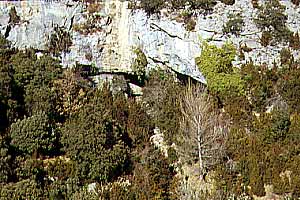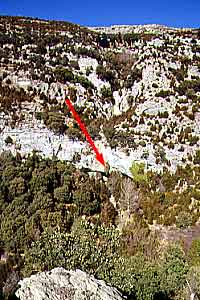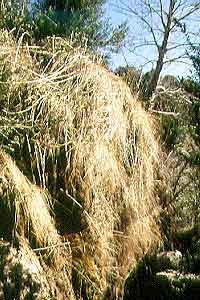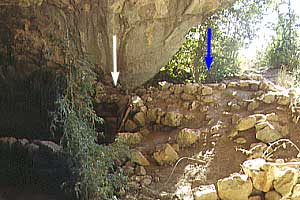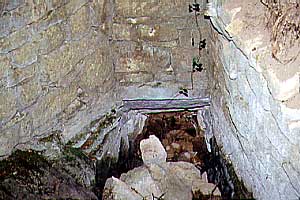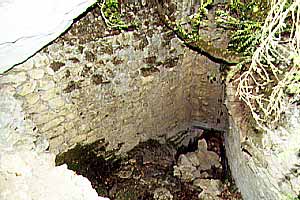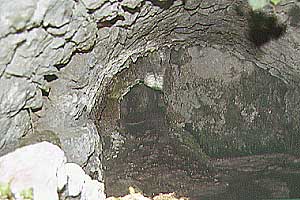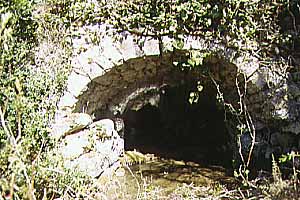Path: Introduction -
Visit the mills; catalogue - Lamiana

Mills in Alto Aragón - harinero
Lamiana

Lamiana is hidden
in the valley of the Río Yaga. From L'Ainsa drive north until you
find the Dolmen de Tella signposted. Take the narrow winding road, pass
Cortalaviña and the hair-pins and then left towards Revilla.
You'll now pass Arinzue and then reach Lamiana where you can drop the car near
the restaurant. From there a path leaves to the Cueva de los Arnales where
the mill is situated. If needed ask directions in the bar.
All pictures: 10.III.2005
